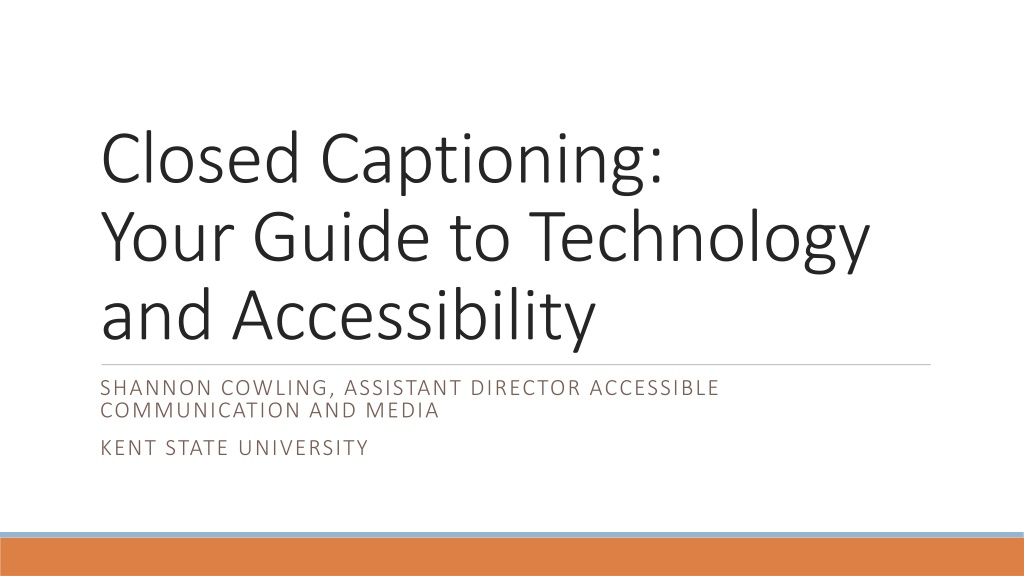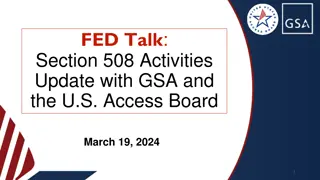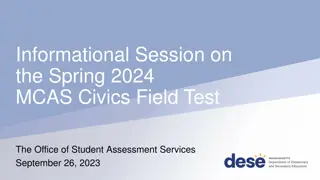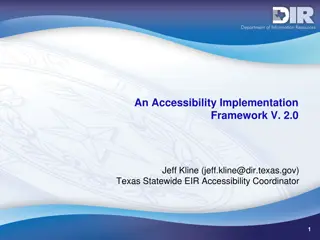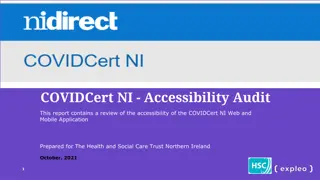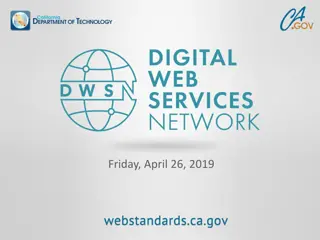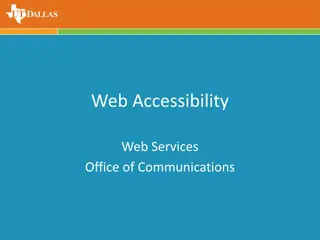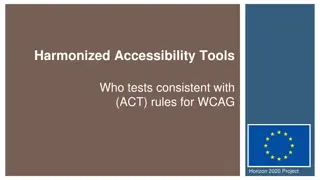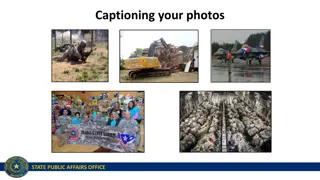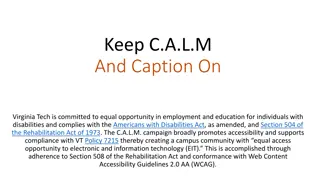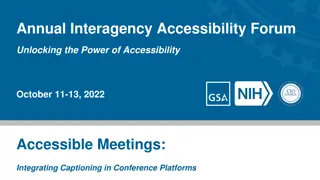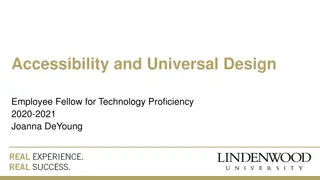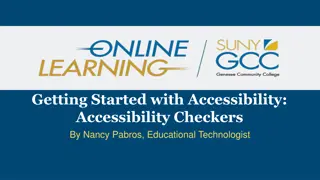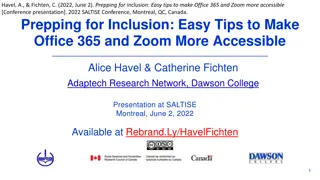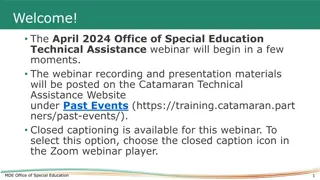Understanding Closed Captioning: A Comprehensive Guide to Technology and Accessibility
Delve into the world of closed captioning with this comprehensive guide covering the definition of captions, the process of captioning, session overviews, closed captioning terminology, technology requirements, and best practices for quality captioning. Gain insights into why captions are essential, how they work, and terminology related to closed captioning. Explore best practices for creating quality captions that are synchronized, accurate, consistent, and readable.
Download Presentation

Please find below an Image/Link to download the presentation.
The content on the website is provided AS IS for your information and personal use only. It may not be sold, licensed, or shared on other websites without obtaining consent from the author. Download presentation by click this link. If you encounter any issues during the download, it is possible that the publisher has removed the file from their server.
E N D
Presentation Transcript
Closed Captioning: Your Guide to Technology and Accessibility SHANNON COWLING, ASSISTANT DIRECTOR ACCESSIBLE COMMUNICATION AND MEDIA KENT STATE UNIVERSITY
What are Captions? Captioning is the process of converting the audio content of a television broadcast, webcast, film, video, CD-ROM, DVD, live event, and other productions into text and displaying the text on a screen or monitor. Captions not only display words as the textual equivalent of spoken dialogue or narration, but they also include speaker identification, sound effects, and music description. What are they, really? Who here is coordinating cc? Based on definition in the Described and Captioned Media Program https://dcmp.org/equalaccess/C.html.
Session Overview Goals for today s session: Understand captioning best practices and basic technical terms Identify campus partnerships and resources, captioning vendors, and budgetary challenges Compare current workflow to suggested workflow Caption
Closed captioning Why caption? https://wistia.com/blog/more-accessible-video How does it actually work? Technology requirements Image retrieved from http://ecups.ecuad.ca/wp- content/uploads/2015/04/The+Complete+Guide+to+Closed+Captioning.pdf
Terms to know Closed captioned Decoder Offline captioning Open-captioned Subtitle Transcription Timecode
Terms continued Captions vs. Transcript Captionist vs. Transcriber Post-Production vs. Live Captions Closed Caption Formats DFXP Flash players SRT YouTube and web media WebVTT HTML5 SAMI Microsoft / Windows Media QT QuickText / QuickTime
Quality Synchronized and appear the same time the audio is delivered Equivalent meaning and intention is preserved Accurate Consistent and clear Readable Captioning Key http://www.captioningkey.org/quality_captioning.html
Best practices Case Mixed case preferred CAPITAL LETTERS imply? Two lines Left justified Lines should not exceed 32 characters Sentence break at a logical point or pause Font Sans serif Proportionally spaced Translucent box
Examples Appropriate Inappropriate Seth pick up his black cat. Seth picked up his black cat. Lila scooted under the bed. Lila scooted under the bed. Darnell and Tameka Johnson are at the meeting. Darnell and Tameka Johnson are at meeting. In seconds she arrived, and he ordered a drink In seconds she arrived, and he ordered a drink. She suspected her face said it all. She suspected her face said it all.
Example YouTube If you remember anything from today
Process (In-House) Verbatim transcript Include speaker ID and sound effects Divide the transcript into 32 characters with no more than 2 lines of text Use captioning software to add the time codes and synch Import the captioning file into the video Consider where the video is housed Quality control & supervision Scalability
Process (Outsourcing) Cost Reputation Turnaround time Workflow & compatibility with current software How do you coordinate services? Current workflow Suggested workflow
Considerations Campus Partnerships - Networking Budget Time Staffing Face-to-face and online courses Implementation Technology Stakeholders Education
Alternatives Not recommended Speech recognition You get what you pay for Transcripts only Not captioning
Lets Caption https://amara.org/en/
Questions? Contact me at scowlin1@kent.edu. Connect on social media.
References & Resources 3 Play Media - http://www.3playmedia.com/ Captioning Key - http://www.captioningkey.org/quality_captioning.html Further explanation and examples of captioning may be found at: http://www.dcmp.org/captioningkey/types_methods_styles.html Cielo 24 - https://cielo24.com/ Cross, J. and Hornsby, A. (ND). The Complete Guide to Closed Captioning and Educational Video Accessibility. Retrieved from http://ecups.ecuad.ca/wpcontent/uploads/2015/04/The+Complete+Guide+to+Closed+Captioning.pdf. Movie Captioner - http://www.synchrimedia.com/ NBC Learn - http://www.nbclearn.com/portal/site/HigherEd Pepnet 2 - http://www.pepnet.org/resources/access-and-accommodations/Offline%20Captioning
